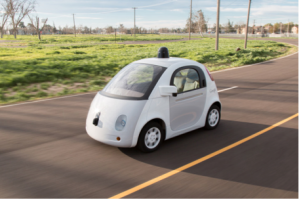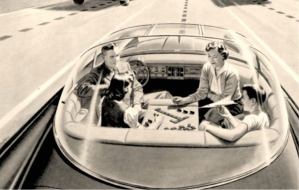By Suzan Afacan
Donald Norman, the director of the Design Lab at the University of California, San Diego, said, “The real problem is that the car is too safe” and continued “They have to learn to be aggressive in the right amount, and the right amount depends on the culture”.
I believe the driving culture is even different between the cities or states of a country. It is really hard to consider these details, since it is also heavily changes in terms of individuals. Additionally, not just the driving culture but also the pedestrian culture should be considered in the coding of driverless cars. Since the consequences of crashes may be paid in human life, these studies are really sensitive. As a result “the right amount” is pretty hard to decide.
Another different aspect is that a driver ‘s behavior could depend on their mood (e.g. they can be in a rush for work, tired, or unhappy) and the traffic congestion.

In addition to all these parts, now people also play with their cell phones (texting, talking, etc.). This will add extra difficulty since their attention to the road, other vehicles and pedestrians will decrease.
Should “…the right amount” include the cell phone factor as well? Here engineers should try to include human mistakes in their modeling. But how do we guarantee that they will certainly make these mistakes in the scenario based circumstances.
These reminds me of the blog post “crime modeling” (by Eli Towle) talking about predicting an individual’s crime based on the pattern similarities with other offenders. This system’s biggest problem is punishing the people forthe potential crime, which they would not commit.
Likewise here, you need to predict possible human mistakes. What will be the consequences, if there is an accident? (Since 2009, the driverless cars have been in 16 car accidents). How does the justice system will work?
It seems there is a long way to go before we the driverless cars around. If someday all these issues could be solved, I strongly believe it will improve the other area of human-machine interaction needed. In our technological world, involving the human factor is a big issue for most of the projects.
Even though a recent study shows that an estimated 21,700 fewer people would die on roads, this assumes that 90% of vehicles are driverless. Achieving this 90%is also big issue when we consider the poverty level in the world.
Despite these problems, according to the news agencies, several car companies will make driverless vehicles available on the market by 2020(you may not able to drive them everywhere, though). By 2025, driverless cars will be used all over the world. Even UBER is considering making their fleet driverless by 2030.
It seems 1956’s Motorola’s “Key to the Future” film will become true.

I am pretty excited to see those days, with have some hesitations though.
Drive Safely…
SA
What role do you think operations research could play in the introduction of driverless cars on roads near you?
LikeLike
Since the driverless cars need lots of decision to make, OR tools can be used to make better decisions. The most obvious ones could be shortest path and traveling salesman models. The car should choose shortest distance to the destination hence shortest path models will be best fit to achieve this goal. If the user need to visit multiple places and come back to the original location, TSP will be the one which need to be used. In addition to these, in case of danger, the driverless cars need to make the hard and quick decision about the conditions, here again optimization models can be used to get the least harm to the properties and to protect the human life.
LikeLiked by 1 person
Do you think that OR could also play a role in arranging for a more socially efficient solution? One possible benefit of driverless cars is that they could communicate with one another and work towards a better overall solution which is likely not the greedy one currently arrived at. While it is simple enough to determine the shortest path this may not be the best for relieving congestion. I can certainly see OR using the information from all the cars to produce a better equilibrium in this particular example.
I think that the danger reaction poses a more complex case since quick reactions often preclude communicating with the other vehicles. Do you think there are reasonable tools in OR to do this better though?
LikeLike